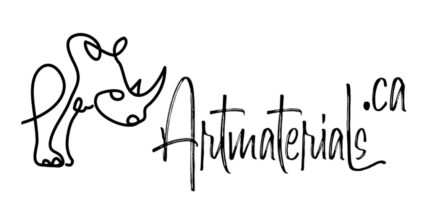- You have no items in your shopping cart
- Continue Shopping

Which medium has the highest pigment load?
If we are talking about professional grade art supplies where the maximum pigment load achieved, soft pastels will be champions. It doesn’t mean that all pastels have higher pigment concentration, but, assuming zero fillers used, it is so.
Technically, pastel will have pigment and binder, dried to their optimal stage. That means little pigment particles glued together. The softer the pastel the less “glue” is inside and the higher pigment used.
Some artists even use top-grade pastel to make their own watercolours or fresco paints: pigment load in pastels can achieve more than 97%.
The second place would belong to watercolours, that’s why volume-wise professional watercolours are so expensive. Pigment load here can be as high as 92% by volume.
Then goes oil with 88%, and then acrylic, gouache and other paints and mediums go.
 What is the least toxic medium to use?
What is the least toxic medium to use?
Generally speaking the safest medium to use is watercolour. Provided they contain no formaldehyde or other harsh chemicals as preservatives (read our article about how watercolours are made) or no cadmium or cobalts as pigments watercolour’s binder has mostly food grade ingredients: such as arabic gum, honey, glycerin, dextrin and corn starch.
Then casein paints go and the third place belongs to artist-grade solvent-free and alkyd-medium free oil paints.
Oil pastels or oil sticks are quite safe to use, but they may require solvents for spreading that can be very toxic.
What about acrylic paints, most of them contain ammonia and/or solvent to improve spreading quality. Even though acrylic paints are easy to use and clean, working with them should be performed in a well-ventilated area.
Soft pastels are one of the worst mediums to use, because of the dust. Most mineral pigments can be quite toxic when go to your lungs. Especially those that contain cobalts and cadmiums as well as oxides of heavy metals (titanium, zinc, iron, chromium etc.). Also, artists tend to hold crayons as well as smudge pastel drawings with fingers that create direct contact of pigments and skin. All artist-grade pigments are very fine and can penetrate inside the body through the skin.
 Which medium is the oldest one?
Which medium is the oldest one?
The oldest medium seems to be charcoal that we can observe in cave paintings dated back 45,500 years.
Although watercolour-like paintings were found in southwestern France, dated back to 15,000 BC to 9,000 BC, watercolours that we know require paper as support and arabic gum as a binder. Papyrus was invented in Egypt about 3000 BC, while gum Arabic (or gum acacia) can be traced back to about 2650 BC, when it started to be used in the preparation of inks, watercolors and dyes.
Milk-based casein paints has been used since ancient Egyptian times, roughly 5-6 thousands years ago. They apparently didn’t last long and couldn’t be used in commercial manufacturing. In 1930’s a new water-based casein paint was developed with the use of synthetic rubber and styrene.
Painting on wood brought egg tempera to the world. The great Byzantine tradition of tempera painting was developed in Italy in the 13-14th centuries by Giotto. Famous icons were painted in Europe and Russia using egg-tempera. Egg tempera was a primary method of painting until after 1500 when it was replaced by oil.
Oil paints created absolutely a new era in painting and brought us Jan van Eyck, Leonardo, Caravaggio, Rembrandt and many-many other great artists. However, Europeans were not the first who used oil as painting medium. Caves in Afghanistan, near the Bamiyan buddhas which were destroyed by the Taliban in 2001, contained even earlier oil paintings, dated to around 650 AD.

 What is the least toxic medium to use?
What is the least toxic medium to use? Which medium is the oldest one?
Which medium is the oldest one?


